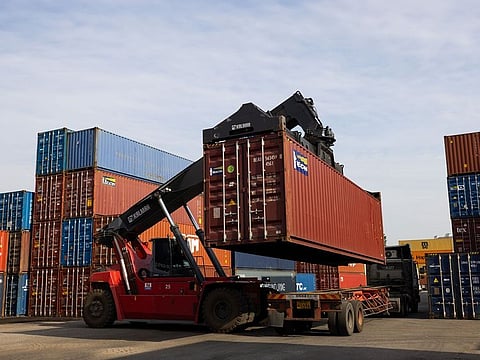UAE, Saudi Arabia best placed to make full use of new Indo-Europe trade route
Proposed corridor will see Gulf states leverage their infrastructure prowess

The signing of a MoU for a new trade and economic corridor from India to Europe via the Arabian Peninsula, the UAE and Saudi Arabia in particular, can be considered one of the most significant decisions at the recent G20 summit in India.
This is significant for the expected outcomes that may result from it. First, the importance of countries involved in the project, which includes apart from the two GCC countries, India, the US and the EU. The new economic corridor can reshape global trade routes and their associated infrastructure, especially since it encompasses the development of railway lines, ports, and various logistical transportation means, including that for sending electricity and hydrogen.
The project has raised two vitally important issues. First, its relation to China’s Belt and Road initiative and the extent of the expected competition between the two projects. The second project has made significant progress in its implementation, while the first one is still in its nascent phase.
The second issue is about the controversy sparked by the project due to concerns regarding the potential impact of the India-Europe corridor on the Suez Canal, which holds immense importance for the Egyptian economy.
The China project and the participation in it of numerous countries, including EU member-countries such as Italy (which recently withdrew due to pressure) has triggered concerns among Western nations. Consequently, there were attempts to establish a rival project, involving the US and some European countries.
A new trade corridor
The rival plan has not gone as expected, for reasons beyond the scope of this discussion. This eventually led to the emergence of the Indo-European corridor as an alternative to the Belt and Road venture.
There will be strong competition between these two projects, hinging on certain factors for success. These include the bulk of investments committed, the significance of participating countries’ clout, and their economic weightage, as well as the infrastructure they possess.
The competition will go in favour of those countries through which the corridors pass, which will ultimately contribute to the development of their basic infrastructure and increase their trade and growth rates.
The GCC nations, particularly Saudi Arabia and the UAE, will be at the forefront due to their participation in the two projects, which reflects their astute understanding of the interconnectedness of international interests. It also reflects an understanding of how to make the most of proposed projects to achieve more gains to strengthen their positions in global trade.
Of significance to Arab world
As for the Suez Canal, an issue that does not concern Egypt alone, but also the GCC nations and Arab countries in general, due to the significance of Egypt, its growth and its stability.
It can be argued that the two competing projects are unlikely to have a significant impact on the Suez Canal due to certain considerations. Firstly, these are not the first trade infrastructure projects to be developed since the Suez Canal launched over 150 years ago.
Although such infrastructures were developed in a big way over the last century, the Suez Canal has not only retained its significance, but its usage has grown as exemplified by the construction of a parallel canal 8 years ago.
This leads to another factor concerning the Suez Canal. Past concerns have proven unfounded due to the continuous growth of global trade exchanges, which requires the development of new infrastructure to accommodate this growth.
The Suez Canal alone will not be able to meet the expected trade growth. It will continue to retain such status as the most important maritime trade route, even in view of the new projects.
As for what’s being circulated in the media about the impact of the new projects on the Suez Canal, it reflects a superficial understanding of the nature of the growth of global trade as a result of population spikes.
The new forecast by the UN shows the world’s population is expected to reach 8.5 billion in 2030, 9.7 billion in 2050, and 11 billion by 2100. This means current trade infrastructures cannot accommodate the growing needs of the anticipated population growth, and requires a response. Notably, the two mega-projects will need years to be completed, with a great need to provide the necessary financing to establish their facilities.
Sign up for the Daily Briefing
Get the latest news and updates straight to your inbox





